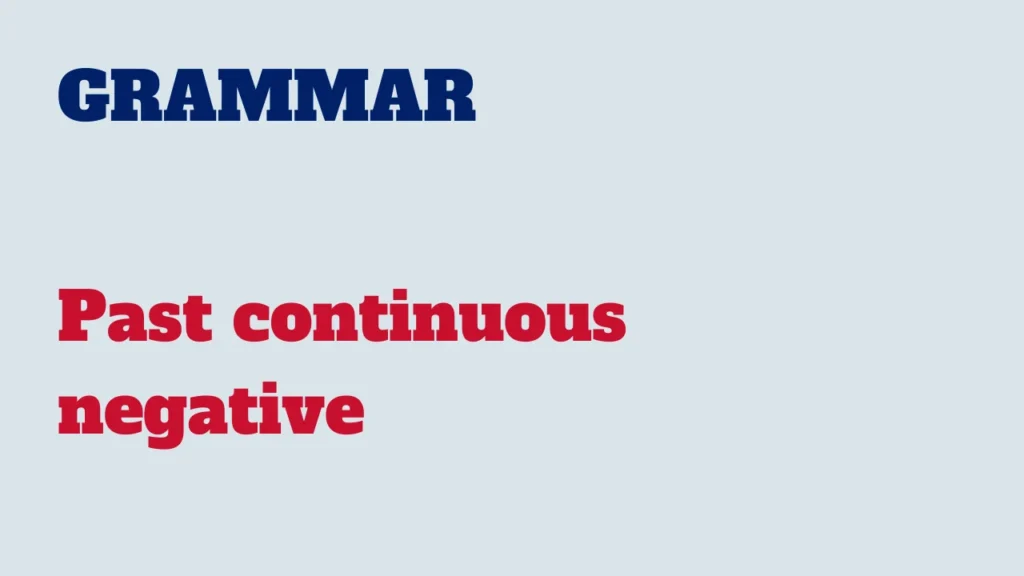In the past continuous tense, negative sentences are formed by using the negative form of the past tense of the verb “to be” (was not/wasn’t or were not/weren’t), followed by the present participle (base form + –ing) of the main verb.

Here’s how to construct past continuous negative sentences:
Structure:
Subject + was not (wasn’t) or were not (weren’t) + Present participle of the main verb (base form + –ing) + Complements or additional information
Examples:
I wasn’t studying when the phone rang.
She wasn’t cooking dinner.
We weren’t playing soccer in the park.
They weren’t watching a movie.
It wasn’t raining heavily.
Table: Past continuous – negative
| Subject | Past continuous negative | Examples |
|---|---|---|
| I | I was not (wasn’t) + present participle | I wasn’t studying when the phone rang. |
| You | You were not (weren’t) + present participle | You weren’t playing soccer in the park. |
| He/She/It | He/She/It was not (wasn’t) + present participle | She wasn’t cooking dinner at 7 PM. |
| We | We were not (weren’t) + present participle | We weren’t watching a movie when it started raining. |
| You (plural) | You were not (weren’t) + present participle | You weren’t working on the project together. |
| They | They were not (weren’t) + present participle | They weren’t talking about their vacation plans. |
Usage of past continuous – negative:
Negating ongoing actions:
Used to express that an ongoing action or event was not happening at a specific point in the past.
Example:
I wasn’t working at that time.
Denying simultaneous actions:
Used to indicate that two or more actions were not happening simultaneously in the past.
Example:
While she was studying, her brother wasn’t playing video games.
Stating absence of background actions:
Used to express that a background action or event was not occurring during a specific period in the past.
Example:
The birds weren’t chirping; it was a quiet night.
Providing context in negative past narration:
Used to provide negative context or background information in past narratives.
Example:
I wasn’t watching TV when the doorbell rang.
Common mistakes to avoid:
Incorrect: They were not understanding the instructions.
Correct: They didn’t understand the instructions. (Use the past simple tense for understanding or perception verbs.)
Incorrect: We wasn’t playing football.
Correct: We weren’t playing football. (Use “weren’t” for the first person plural.)
Understanding how to form and use past continuous negative sentences allows you to express the absence of ongoing actions or events at a specific time in the past. Practice constructing negative sentences in the past continuous tense to enhance your language skills. Happy learning!



